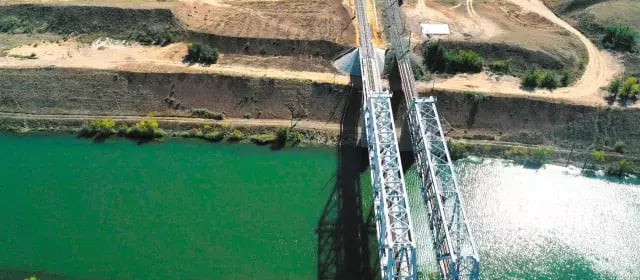Ulaanbaatar, Mongolia (TEH) – As geopolitics continue to evolve, the initiative to build a China-Mongolia-Russia economic corridor, spearheaded by China’s Foreign Minister Wang Yi in 2015, gains increasing relevance. The project, aimed at facilitating the development of these three nations, has the potential to radically change geo-economic processes worldwide.
The corridor, spanning the breadth of the Eurasian continent, enables Russia to broaden its export flow towards the East. It was in Tashkent, in 2016, that a program formalizing the creation of the economic corridor was signed. The agreement set forth seven primary domains of cooperation, including the development of interconnected transport infrastructure, industrial and investment cooperation, environmental protection, and promotion of cross-border and regional collaboration.
Five years post-signature, the involved parties will assess the program’s success and decide on its extension. During a 2022 meeting, Russian President Vladimir Putin, alongside Chinese leader Xi Jinping and Mongolian President Ukhnaagiin Khurelsukh, proposed an intensified five-year effort to expedite the program’s existing objectives.
Three priority areas were identified in 2018 for immediate focus: modernizing the Ulan-Ude to Tianjin railway corridor; developing road transport along the AN-3 highway; and exploring opportunities for Chinese enterprise involvement in modernizing Mongolia and Russia’s power grids.
Experts are confident that these integration transport projects could speed up the construction of the Soyuz Vostok gas pipeline, part of the Power of Siberia-2 project. The Mongolian side is optimistic about this prospect, anticipating financial benefits from transit payments and the potential to supply gas to Ulan Bator.
However, challenges persist, particularly concerning the single-track, non-electrified railway corridor in Mongolia. The disparity in track width between China and Mongolia/Russia, coupled with the Mongolian government’s hesitance in modernizing this section, further complicates matters. Nonetheless, cargo transport on this route has consistently risen in recent years, albeit still lower than transit through Kazakhstan.
As the Central Railway Corridor undergoes modernization, discussions regarding the development of Eastern and Western Corridors through Mongolia continue. While the Western Corridor could connect Kuragino, Kizil, Kobdo, and Urumqi, the Eastern Corridor may run from Borzi to the Chinese urban region of Panjin.
Despite these promising plans, issues remain in road communication between countries. The reconstruction of the Darkhan – Ulan Bator section of the AN-3 highway, slated for completion this year, and the lagging road infrastructure development contribute to these problems. Moreover, the COVID-19 pandemic has slowed down several projects in the economic corridor.
Considering the current geopolitical landscape, Mongolia’s balanced stance towards its neighbors, Russia and China, and its partnerships with Western nations becomes of significant interest. With Russia keen on reorienting most of its export flow towards the East, Mongolia’s transport infrastructure is of strategic importance.
It can be inferred that a shift in Russia’s foreign economic relations is underway, with China possibly replacing EU countries as the primary trading partner. In this scenario, Mongolia could emerge as a pivotal transit link. This shift towards the East could also stimulate development in Siberia and the Far Eastern regions of Russia, positively affecting the standard of living and economic activity in these areas.
The successful development of the China-Mongolia-Russia economic corridor could revolutionize global geo-economic processes. With a strategic approach, this corridor could potentially emerge as a key driver of global economic progression.


